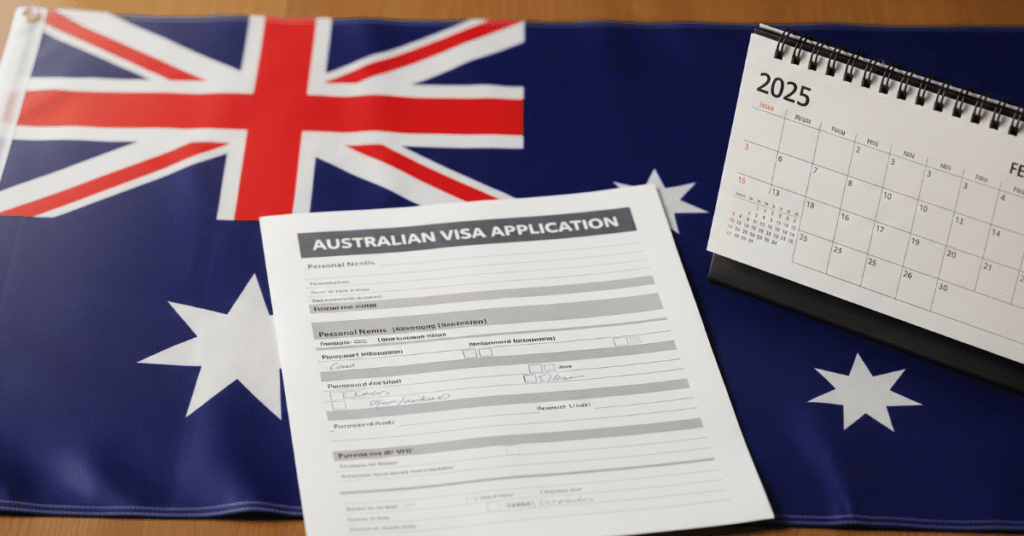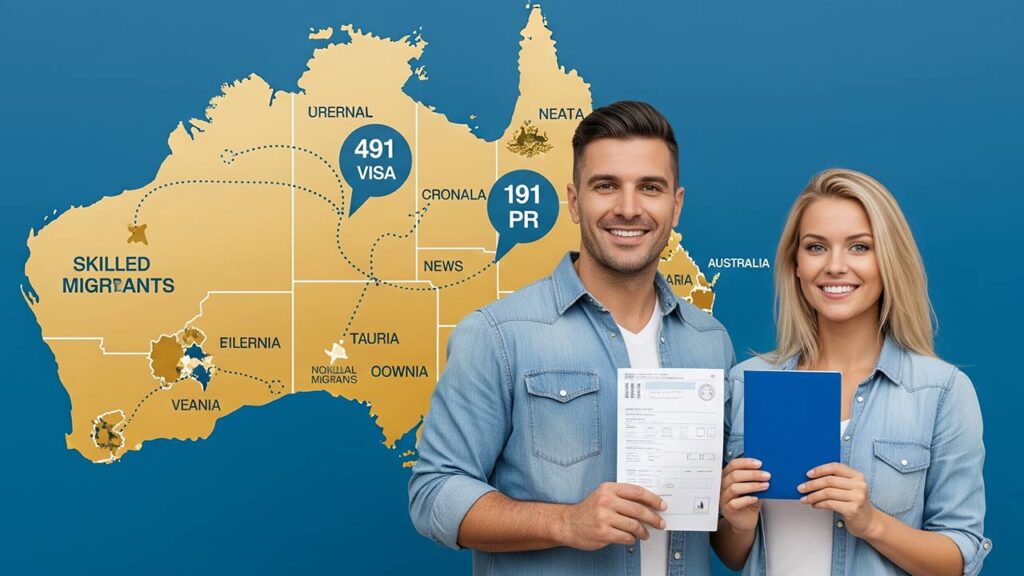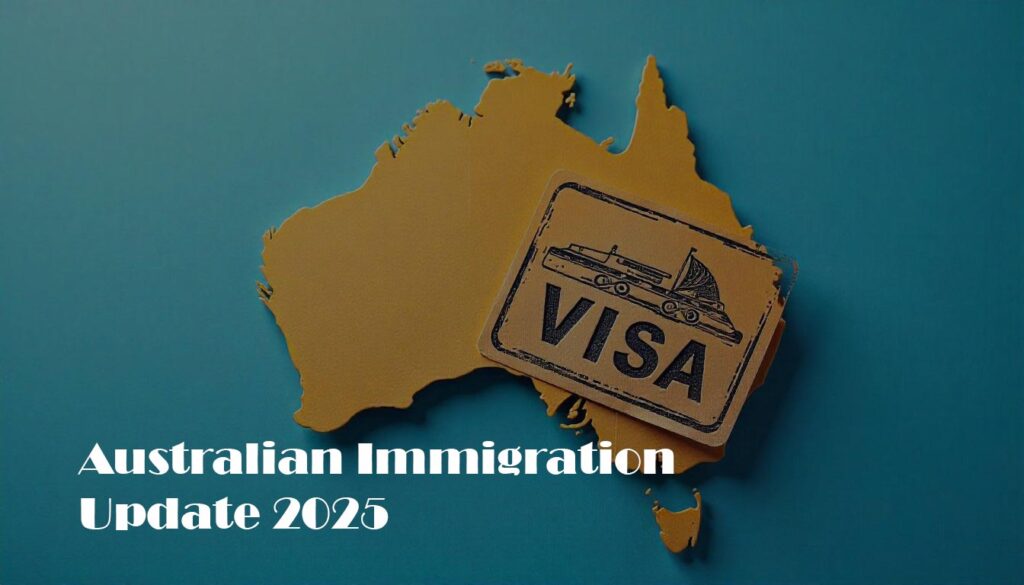The Australian immigration situation is changing drastically, and a range of Australian immigration reforms and Australian visa reforms are on the way to becoming operational in July 2025. The new immigration policies are targeted at perfecting the Australian migration program in solving the critical shortage of skills, improving the integrity of the visas as well as simplifying different streams of visas.
Australian Immigration Update in New Financial Year: Visa Changes Effective From July 2025
The Australian government is making significant Australian immigration changes and visa changes as of July 2025, and this is a crucial transformation in its immigration policy. Skilled workers, international students, and people filing family and partner visas will be influenced the most by these new immigration rules.
The general aim of these reforms is that the Australian immigration system is more responsive to the economic needs of the country, focusing more on genuine migrants, and it supports long-term sustainable growth.
This article presents an in-depth review of the significant changes affecting skilled migration, family and partner visas, and student and graduate visas to make you well aware of the changes that are bound to be introduced during the new financial year.
Major Changes in Australia’s Skilled Migration Program
There is an overhaul of the skilled migration program in Australia, whereby recruitment of highly skilled people is taking place in regard to the particular labor requirements. Another major change is changing the current 482 visa to a new “Skills in Demand” visa. These changes in Australian visas and in skilled migration changes Australia aim to identify a more efficient and specific response to skilled immigration, reflecting the new immigration regulations.
New ‘Skills in Demand’ Visa Replaces Subclass 482 (Temporary Skill Shortage Visa)
The new Skills in Demand visa is replacing the Subclass 482 (Temporary Skill Shortage) visa. The new visa is going to be further characterized by three streams that will address the various categories of skilled workers:
- Core Skills Stream: This stream is aimed at the occupation on the new Core Skills Occupation List (CSOL) whose minimum salary level is AUD 76,515. It will supplant the former Medium and Long-term Strategic Skills List (MLTSSL) and Short-term Skilled Occupation List (STSOL).
- Specialist Skills Stream: The Specialist Skills Stream targets high-income/high-skilled applicants, and is available to anyone whose income exceeds a substantially higher income level of AUD 141,210 (Specialist Skills Income Threshold – SSIT), irrespective of the profession of the individual.
- Labour Agreements Stream: The stream is maintained to accommodate the skillful workers being nominated by an employer that holds a Labour Agreement with the Australian Government, being competent to request bespoke arrangements to avert the shortage particular to an industry.
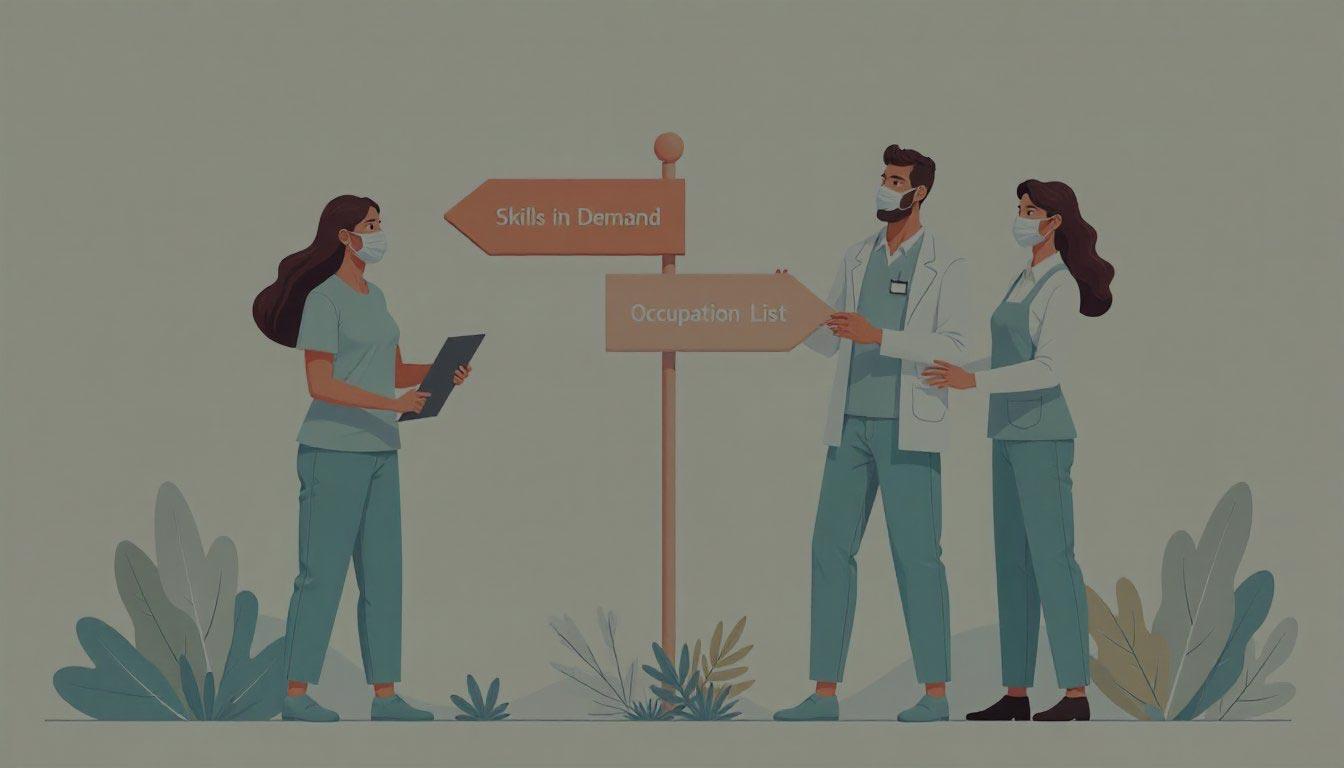
Revised Skilled Visa Points System
The skilled migration test points have changed to effectively reward good quality work experience and Australian qualifications. Although detailed alterations to the points are constantly updated, the following are significant changes in the points:
- Work Experience: Bonus points will be added to those with a lot of relevant work experience (additionally, 20 points for relevant experience of 5+ years).
- Australian Qualifications: Extra points are given to Australian qualifications, so it acts as an incentive to international students to get permanent residency options after they have studied in Australia.
- Skills Priority Category: Bonus points will be assigned to those whose occupation falls on the new Occupation Shortage List, especially in areas with a critical shortage, such as healthcare, technology, and renewable energy.
Updated Salary Thresholds & Indexation
A key reform is the annual indexation of the minimum salary threshold for skilled visas. From July 2025, this threshold will increase by 4.6%. The Core Skills Income Threshold (CSIT) and the Temporary Skilled Migration Income Threshold (TSMIT) will rise from AUD 73,150 to AUD 76,515. The Specialist Skills Income Threshold (SSIT) will increase from AUD 135,000 to AUD 141,210. This annual adjustment, tied to the Average Weekly Ordinary Time Earnings (AWOTE), ensures fair wages for skilled migrants and reflects the evolving labor market conditions.
Expanded Priority Occupation List
The existing MLTSSL and STSOL will be replaced by a unified Occupation Shortage List. This list is expected to feature over 450 jobs in priority sectors such as healthcare, IT, and construction. This consolidated list will be central to determining eligibility and employer sponsorship, ensuring that migration pathways are closely aligned with Australia’s critical workforce demands.
Regional Migration Incentives
To promote growth outside major metropolitan areas, regional migration remains a strong focus. The Regional Sponsored Migration Scheme (RSMS) will continue, with incentives such as priority processing and potentially more visa places allocated for regional applicants. Income thresholds for skilled regional visas will also increase in line with the national salary adjustments. These changes encourage skilled migrants to settle in areas where their skills are most needed, supporting regional development.
Major Changes in Australia’s Family and Partner Visa

Significant partner visa changes are coming into effect from July 2025, along with other family visa updates, under the broader Australian immigration changes. These reforms aim to streamline the application process, enhance flexibility, and maintain the integrity of genuine relationships.
Onshore and Offshore Application Reformed, Not Merged
While a complete merger of the 820/801 (onshore) and 309/100 (offshore) partner visas has not taken place as previously contemplated, applicants will benefit from a streamlined, single online lodgement portal for both temporary and permanent stages. The distinction between onshore and offshore applications remains, but with enhanced transition flexibility, allowing offshore applicants to potentially switch to onshore lodging under clearer conditions. This change is aimed at reducing redundancy and simplifying the application journey.
Updated Processing Fees & Application Charge
Visa application charges for partner visas Australia have been adjusted. Effective July 2025, the estimated new fees are:
- Main applicant: AUD 9,095 → AUD 9,365
- Additional adult applicant: AUD 4,685
- Dependent child (<18): AUD 2,345
Faster Permanent Visa Processing
There is an ongoing focus on achieving faster processing times for the permanent 801 stage of the partner visa for eligible couples. This aims to reduce the waiting period for permanent residency once the initial temporary visa has been granted.
Digital Portal Simplifies Applications
The Department of Home Affairs has implemented a digital submission portal, which is expected to facilitate better communication, real-time tracking, and faster document uploads. This centralised system aims to reduce delays and simplify the application process for partner visas.
Continued Emphasis on Genuine Relationships
The fundamental requirement for proving a genuine and continuing relationship remains strict across all four pillars: financial, social, household, and commitment. Applicants must continue to provide comprehensive evidence to demonstrate the authenticity of their relationship.
New Parent Visa Options
Under the Australian parent visa changes, new options are being introduced:
- 3- and 5-year options: Temporary sponsored parent visas with 3-year and 5-year validity periods are available.
- Balance-of-family test removed in some cases: While generally the balance-of-family test still applies for permanent parent visas (requiring at least half of the parent’s children to be Australian citizens, permanent residents, or eligible New Zealand citizens usually resident in Australia), specific temporary parent visa options may offer more flexibility.
- Long-term pathway to PR: These temporary visas can offer a pathway to permanent residency, albeit often with significant wait times and costs.
Child Visa Updates
Updates to child visas include:
- Age limit for dependents raised to 21: The maximum age for dependent children included in parent or skilled visa applications has been raised to 21 years (previously 18 years, with some exceptions up to 25 for full-time students).
- A separate subclass for adopted children introduced: This aims to clarify and streamline the process for adopted children to obtain an Australian visa.
Stricter Sponsorship Requirements
Sponsors for family visas, particularly partner and parent visas, will face stricter requirements. These may include enhanced character checks and greater financial obligations to ensure they can adequately support their sponsored family members in Australia. These stricter requirements are part of the broader Australian immigration rules changes designed to ensure the integrity of the migration program.
Major Changes in Australian Student and Graduate Visas
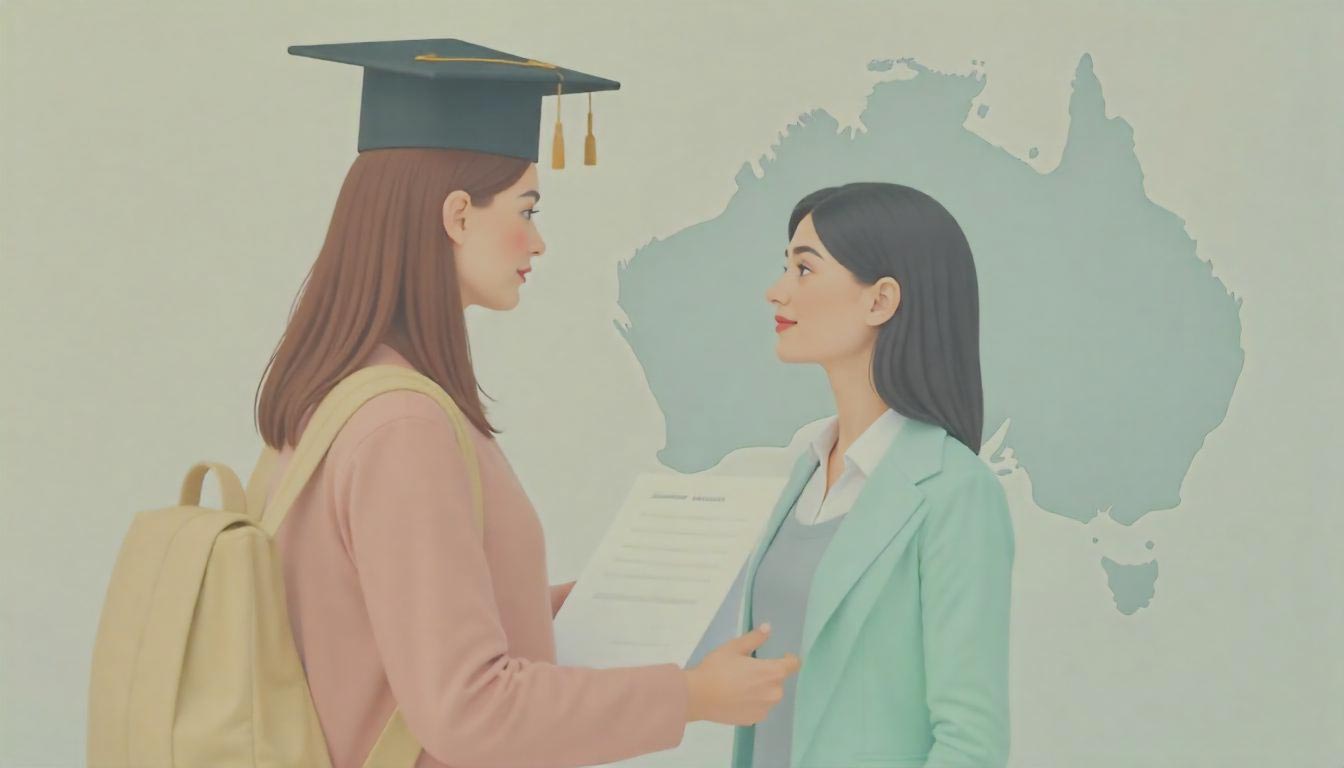
The new immigration laws in Australia also bring significant changes for international students and graduates, impacting financial capacity, English language proficiency, and post-study work rights. These reforms aim to better align visa holders with Australia’s workforce needs and enhance the quality of the international education sector.
Financial Capacity Requirement Increased
The financial capacity requirement for a student visa to Australia has been significantly increased. The previous requirement of AUD 24,505 has risen to AUD 29,710. This means international students must demonstrate access to substantially more funds to cover their living expenses, ensuring they are financially capable of supporting themselves without relying heavily on work.
Higher English Language Requirements
New English language requirements are being implemented:
- Student visas: Minimum IELTS score of 6.0 (or equivalent for other approved tests).
- Temporary Graduate Visa (Subclass 485): Minimum IELTS score of 6.5 (or equivalent), with no band less than 5.5. These higher requirements aim to improve academic success and ensure graduates have the English proficiency necessary for workforce readiness.
Updated Post-Study Work Rights
Work limits for students and graduates are being adjusted:
- Bachelor’s students: Allowed to work up to 24 hours per week during study terms (up from 20 hours).
- Postgraduates: Full-time work may be allowed in the field of study only, aiming to retain skilled graduates in areas of shortage. Specific durations for Temporary Graduate visas also vary based on qualification level (e.g., Bachelor’s/Master’s coursework: 2 years; Master’s research/Doctoral: 3 years).
Graduate-to-Permanent Residency Pathways
New permanent residency pathways are being explored and prioritised for top students in critical fields such as STEM, healthcare, and other priority sectors that align with Australia’s workforce shortages and long-term immigration goals. This indicates a strategic shift to retain highly skilled international graduates.
New Scholarship Programs to Attract Global Talent
The government is introducing new and expanded scholarship programs, such as the Australian Government Research Training Program (RTP) Scholarship, aimed at attracting high-performing international students in critical fields like AI, medicine, and engineering. These initiatives are part of a long-term strategy to bolster Australia’s talent pipeline.
Updated Visa Fees Effective from July 2025
The Australian Government has officially announced increases in visa application charges across various categories, effective from July 2025. These Australian immigration changes, Australian visa changes, and migration changes in Australia reflect adjustments to reflect the cost of processing and managing the immigration program.
Partner Visa Fee
- Main Applicant: AUD 9,095 → AUD 9,365
- Additional Adult Applicant: AUD 4,685
- Dependent Child: AUD 2,345
Student Visa Fee
- Subclass 500: AUD 1,600 → AUD 2,000. This 25% increase is one of the largest among all visa categories, intended to reflect the actual cost of international student management and support.
Other Major Visa Fee Updates
- Visitor Visa (Subclass 600): Offshore AUD 190 → AUD 200, Onshore AUD 190 → AUD 500 (significant increase for onshore applications).
- Temporary Graduate Visa (Subclass 485): AUD 1,895 → AUD 2,235 (base application charge, increased from February 2025).
- Skilled Independent Visa (Subclass 189): AUD 4,640 → AUD 4,910
- Skilled Nominated Visa (Subclass 190): AUD 4,640 → AUD 4,910
- Skilled Work Regional (Provisional) Visa (Subclass 491): AUD 4,640 → AUD 4,910
- Temporary Skill Shortage (TSS) Visa (Subclass 482): AUD 3,035 → AUD 3,210
Who Is Most Affected by These Australia Immigration Changes in 2025?
These extensive reforms will impact several key groups:
- Students: International students will face higher financial requirements and stricter English language criteria, but also potentially clearer pathways to permanent residency for those in priority fields. The Australian student visa changes are particularly significant.
- Skilled Workers: Those seeking skilled visas will be directly affected by the new ‘Skills in Demand’ visa, revised points system, and updated salary thresholds. Skilled migration changes will require careful assessment of new occupation lists and income requirements.
- Families/Partners: Partner visa applicants will experience changes in processing fees and a more streamlined application portal, though the emphasis on genuine relationships remains. Australian parent visa changes offer new temporary options, while child visa updates benefit certain dependents. Explore our partner visa application guide for a more detailed information.
- Sponsors/Employers: Employers seeking to sponsor overseas workers will need to adapt to the new ‘Skills in Demand’ visa framework and updated salary thresholds. Sponsors for family visas will also face stricter requirements.
Why These New Australian Immigration 2025 Changes Matter
The new immigration rules reflect the Australian government’s strategic response to several key imperatives:
- Addressing Labour Shortages: By focusing on a refined Occupation Shortage List and attracting highly skilled migrants, Australia aims to fill critical gaps in its workforce.
- Improving Visa Integrity: Stricter financial capacity requirements for students, enhanced English language proficiency, and continued emphasis on genuine relationships aim to reduce visa fraud and ensure only legitimate applicants are granted visas.
- Aligning with Workforce Demand: The shift towards the ‘Skills in Demand’ visa and targeted graduate pathways ensures that the immigration program actively supports Australia’s economic and social needs.
- Ensuring Economic Contribution: Higher salary thresholds and clearer pathways for skilled migrants are designed to ensure that new arrivals contribute significantly to the Australian economy.
Final Thoughts
The Australian immigration changes effective from July 2025, including the various visa changes and new immigration rules, mark a major shift in Australia’s immigration landscape. These reforms aim to create a more targeted, efficient, and integrity-driven system that serves Australia’s long-term interests. Understanding these updates is crucial for anyone planning to live, work, or study in Australia.
Need Help Adapting to New Visa Changes? Get Expert Help from VXL Migration and Education Consultants
Navigating these complex new immigration rules can be challenging. Professional assistance from experienced migration agents and education consultants can significantly improve your chances of success. VXL Migration and Education Consultants offer expert guidance, including eligibility assessments, comprehensive document handling, and strategic advice tailored to the new, stricter regulations.
Don’t let these changes deter your Australian dream. Book a consultation with VXL Education to understand how these changes specifically impact your circumstances and to ensure a smooth application process.
